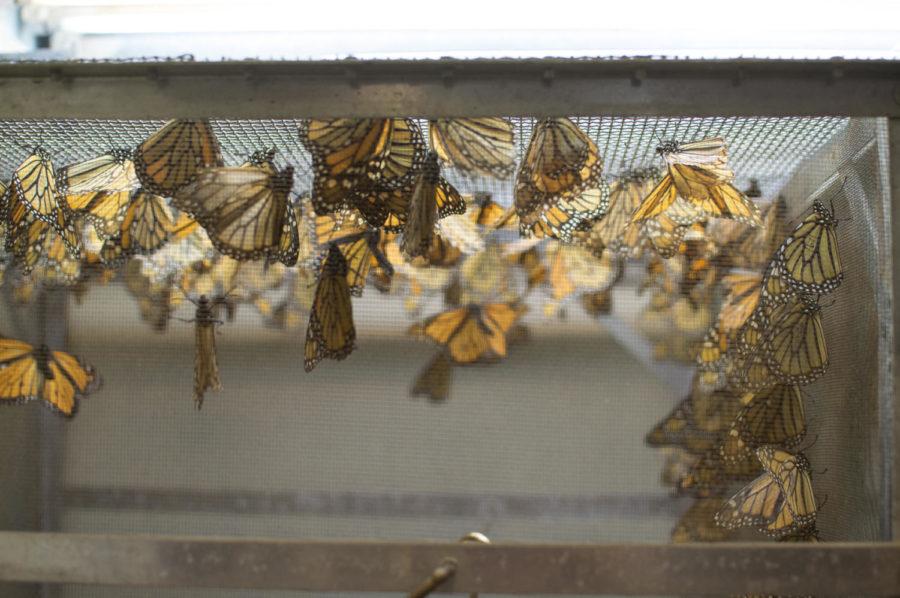Monarch numbers rebound in Mexico this winter
Charlie Coffey/Iowa State Daily
Monarch butterflies are watched at Iowa State University in the Genetics Laboratory. Iowa State is participating in a monarch conservation effort alongside the U.S. Agricultural Research Service.
March 21, 2016
Just how many butterflies can fit in an acre is perplexing to imagine. Try imagining 10 acres worth.
An increase in monarch butterfly coverage at wintering habitats has sparked optimism in local conservationists after the World Wildlife Foundation (WWF) announced Feb. 26 that the butterflies covered 10 acres of forest in Mexico.
This is a marked increase from winters of previous years, when the size of the population of butterflies occupied only three or fewer acres. The successful rebound can be partially attributed to the Iowa Monarch Conservation Consortium (IMCC).
The IMCC was founded in 2015 by Iowa State’s College of Agriculture and Life Sciences, the Iowa Department of Agriculture and Land Stewardship and the Iowa Department of Natural Resources. Other private groups such as the Iowa Soybean Association and Iowa Pork Producers Association provided funding grants.
The IMCC is taking a more scientific approach to monarch conservation. Its efforts include determining habitat improvements in fields that do not interfere with agricultural production, caterpillars’ milkweed preferences and monitoring plant patch size benefits.
But the reason why the monarch population rebounded so significantly is not completely understood.
“Insect populations don’t run steadily,” said Nathan Brockman, curator of the Christina Reiman Butterfly Wing of Reiman Gardens.
Large-scale factors such as insecticide use and availability of milkweed plants could have been at ideal levels over the past year, Brockman added.
“It’s not just one thing you can point to,” Brockman said.
Brockman added that the weather this past year was, for him and other conservationists, the largest contributing factor to the monarch’s success.
President Barack Obama’s “National Strategy to Promote the Health of Honey Bees and other Pollinators” could also be a contributing factor. Introduced in May 2015, the strategy outlines statistics on pollinator losses, goals for the next five years in numbers and habitat and partnership how-tos in monarch conservation.
Enthusiasm for monarch conservation, while fervent during the past year, could wane because of this winter’s strong numbers.
“That’s one of the big worries, to have a two-year increase,” Brockman said. “The monarch is really a characteristic superfauna. There’s a passion for them.”
A question remains as to the importance of conserving an initially trivial or minor species.
“Why can’t it just be?” Brockman asked. “We should protect them for the species sake.”

















